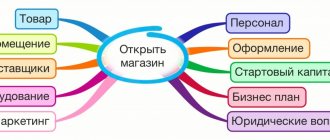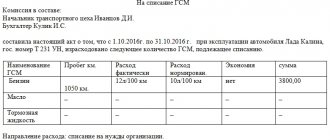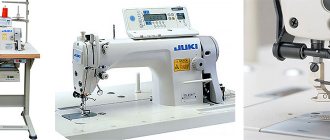Goods in hand
This is a very powerful trick for selling a product to the buyer. He needs to push the goods into his hands at any cost. This is what creates the feeling of ownership - the client has taken the product in his hands, it will be more difficult to give it away. Even if we work with intangible services, it is necessary to find an object that personifies the service. For example, these could be advertisements and brochures.
If there are several product options, then we push several items into the buyer’s hands at once. Let the thought in his head NOT “to buy or not,” but “what to buy from this.”
Dealing with Greed
To sell goods to the buyer, you can act through greed. People are greedy and a profitable offer will always be interesting. For example, taking a price fork. The essence of this technique is to present our price against the background of another, higher price. Moreover, we first name the higher price, then the lower one:
This thing usually costs 2 thousand. But we work directly with the manufacturer and we only have 1200
The buyer hears a high price and will perceive everything else from it. In the example above, the benefit is 800.
Or how marketers exploit greed. To sell a product that may not be interesting, you can simply try to sell it in large quantities at a discount or together with another product that is not particularly in demand. For example:
If you take 5 kg of pasta, you will get a kilo of oatmeal for free
Perhaps you didn’t plan to take so much pasta and the oatmeal doesn’t seem to be particularly necessary. But it's FREE, and it's profitable.
Sixth cup of coffee - free
Six cups of coffee, six! Even if this is a large company, then coffee alone, where only the sixth cup is free, is not enough.
Or in a bistro - a burger can be inexpensive. But what they take with it costs more. For example, drinks.
New product on the market: stages of implementation
The process of introducing new products to the market scares away business “newbies”, since not every young company is ready for global competition. In cases where a product or product that is planned to be launched on the market is “doomed to success”, is truly original and will resonate in the hearts of buyers, marketers advise entrepreneurs not to be afraid to take risks and try to adhere to a clear strategy within several main stages promoting a new product to the market.
Market research
The first and truly important task that needs to be given special attention when promoting a new product on the market is researching the market and the “mood” of the target audience for which the new product is intended to be sold. An entrepreneur must identify the most promising market sectors for selling his new product and determine the circle of consumers who will buy such a product in the future. The best “niche” for a new product is “scarce” goods that cannot be bought in your city.
For example, in the city there are shops selling bicycles, but they are all of low quality, many cyclists are ready to come and pay their money for bicycles of well-known brands, but they simply are not there, and then people have to order bicycles on the Internet, overpay, and go shopping in other regions. That is, this niche is not yet occupied by anyone, and by introducing a new product to the market, in our case, bicycles from a well-known company, which has no analogues in our city or country, such products automatically become in demand, since they satisfy the needs of consumers.
Experienced marketers advise businessmen who are engaged in market and target audience research to monitor “foreign” trends in this regard. That is, all new products that have successfully “entered” the foreign market in most cases will “take root” in our country, and the “cream” here will be taken by the one who manages to introduce a new product to the market faster than others.
Product positioning
An important stage in promoting a new product to the market is positioning the product and developing its concept. To do this, it is necessary to analyze the new product, characterize its strengths and weaknesses, determine its future value, and evaluate how well the new product will “meet” consumer expectations. How not to make a mistake at this stage? First, the right decision would be to determine the basic qualities of the product that the consumer will “appreciate” first of all. For example, when promoting a new product on the market - unique cosmetics made from honey, the “emphasis” when creating a product positioning concept should be placed on the naturalness of all components of such cosmetics, the safety of these products, or the unique technology used.
All these “basic characteristics” of a new product will help it differ from its competitors and attract consumers. Based on this data, emphasis will subsequently be placed when drawing up unique sales offers, conducting an advertising campaign, etc.
We take a place among competitors
Before promoting a new product to the market, this market must be comprehensively studied, and, first of all, this applies to competing firms. It is necessary to find out which companies are represented on the market for this type of product, what direct and indirect competitors the company has, find out how they position themselves, what development strategy they follow. If products of competing companies similar to our new product have a higher cost, then the company should build its positioning in relation to its competitors, focusing on low prices. If the prices for a new product are higher than those of competitors, then the consumer needs to be clearly explained why he is “overpaying” for.
You need to position your new product correctly relative to your competitors. For example, when launching new highly carbonated drinks with fruit juice, three indirect competitors for this type of product will be: carbonated drinks, juices, and water. Think about why your product is better than your competitors and focus on this.
Making a sales forecast
Not a single strategic action plan for introducing a new product to the market is complete without drawing up a sales forecast - this is a certain value that the company can achieve if certain conditions are met and the main objectives are achieved. Of course, it is not easy to obtain accurate and “100%” data here, but without this data it is impossible to predict how successful sales of a new product will be, and how long it will take to pay off all the funds invested in the project. The sales forecast is made, among other things, based on data from surveys of the target audience, on research data on sales of similar products over the past, based on market trends, seasonality, macroeconomic trends, the amount of funds invested in advertising, marketing, etc. It is the preparation of a sales forecast that will help a businessman plan activities in order to achieve the desired indicators.
Drawing up a marketing promotion plan
According to marketers, there is no “universal” tool for promoting a new product to the market. For example, large companies, introducing new products to the market, do not spare any money on “promotion”, investing significant sums in advertising on television, radio, on the Internet, outdoor advertising and “promotion” of the product at points of sale. Smaller firms choose other ways of “promotion”. For example, word of mouth, promotion through social networks, contextual advertising, etc. When planning to sell a product at retail, an entrepreneur must think in advance about options for its delivery or working through distributors, etc.
Experienced businessmen consider advertising the product at points of sale to be the most effective way to “promote” a new product. This allows you to draw attention to it. Try to make sure that the product on store shelves is noticeable, attractive, and compares favorably with the products of other companies. If, after all the money invested in marketing and promotion, the expected result cannot be achieved, experts advise making changes to the strategy for promoting it to the market, using new ways for advertising, and thinking through the concepts of other promotions.
At this stage of introducing a new product to the market, it is truly important to determine the size of the advertising budget for “promotion” of the product, draw up a promotion program, and think through what means of communication it will be carried out. Remember that the advertising campaign for a new product should be quite powerful and memorable; in advertising, focus on the distinctive properties of the product, its differences from analogues.
Good options for promoting new products to the market in the early stages are their sales via the Internet, through participation in specialized exhibitions, sponsorship, etc.
“Testing” a new product
This stage in terms of measures to bring a new product to the market is one of the final and truly important ones. When starting to promote a product to the market, you need to make sure it is relevant among buyers. The product must be evaluated comprehensively: its quality, packaging, cost, ease of use, functionality, compliance with the stated characteristics, etc. When a new product is tried by a certain number of first customers, based on the feedback, it will be clear whether their expectations regarding the product were met, and whether your expectations regarding the demand for the product and the correctness of its positioning were also met. At this stage, it will not be too late to make adjustments to the strategy for promoting the product on the market, depending on what results the “testing” of the new product will give.
As we can see, the successful entry of a “new product” into the market depends on many factors and consists of stages, the implementation of which must be approached seriously. It is an integrated approach to promoting new products that allows you to achieve the desired results, helps new products “gain a foothold” in the market, differentiate themselves from competitors, “win” the hearts of their customers and, ultimately, bring a stable profit to the company. (c) Business.Ru
Dealing with feelings of loss
Negative feelings are perceived more acutely than positive ones. For example, to lose a thousand or find a thousand - the first option will be perceived more intensely by us.
If we put a product in the hands of the buyer, then it can be picked up. For example, in order to show from the other side. Or if the client expresses a lack of interest. We take away what the client has developed a sense of ownership for.
Or this way you can spur interest:
Only two copies left. It was nine in the morning, I think these will also leave quickly
It’s one thing when a buyer decides not to take it, it’s another thing whether he gets it or not. One more example:
With this service you will save 20%
- this is the use of feelings of greed. But another option will be stronger:
Without this service you will lose 20%
- this is perceived more sharply.
Sometimes the initiative is not interesting to the client
If you often ask a client whether he wants to buy or not, you can often get a negative answer. In some cases, it makes sense to take the initiative yourself. For example, one American company increased employee contributions to the corporate pension fund. They replaced the contracts - in the old ones, employees had to indicate how much they wanted to make contributions. Many refused these costs. The new contracts had a default deduction of 2% and employees could refuse. But for the majority this was not interesting and they deliberately left the deduction at 2%.
What does this look like in practice? For example, a customer takes a bottle of water. The seller can put a second bottle in front of him:
The second one is with a 50% discount
They don’t ask “should/shouldn’t”. The situation is created in such a way that the visitor would feel comfortable agreeing and, conversely, would have to make an effort to refuse. If in the example with a bottle of water you simply ask, would you like a second one for half the price, then the predictable answer is no. But the seller has already taken out the second one, the buyer needs to take the initiative to “stop” him, to refuse. And here it’s easier to agree.
Or how contracts of non-state pension funds are drawn up. In hospitals, a fund employee sits right at the entrance. When stopping people passing by, he addresses them like this:
Snils, do you have this green one? If yes, then you need to fill out this form
A person needs to take the initiative to refuse. It’s easier not to take the initiative and agree to join the fund.
Foot in the door and door in the forehead
These are classic sales techniques. The first, foot in the door, means that the customer is invited to try the product. By agreeing to small things, it’s easier to agree to big things. This could be trial use, the use of samplers, and so on.
The second, the door to the forehead, means that we first ask for something very big. And when a person refuses, we offer less, which seems more attractive. For example, they offer to buy a whole set of goods that are expensive. After refusal, a separate item is offered as an “exception”.
How to sell a product to a consumer.
To sell a product, the consumer needs to have good knowledge about the consumer himself. More precisely about his behavior, the fact is that there are always easily suggestible people, your task is simply to find them and correctly present your product to them. To present it correctly means using one of the methods of selling a product. I will describe these techniques below, but I’ll say right away that when steaming people you need to be prepared to encounter people who are not falling for scams for suckers.
Take it for granted.
A very common method among sellers is to turn a completely ordinary sale into a mandatory procedure (although it is not one). The method is very widespread and is used everywhere, sometimes on a colossal scale. For understanding, I will give a few examples from life.
1st example.
You apply for a loan, and then a bank representative tells you that your monthly payment will be XXXXr/month. You start counting (if you start) and realize that the payment is too high. Next, the manager explains that insurance is included and says that this is a mandatory condition. If you do not calm down and begin to prove that insurance is not required, you are informed that without it, you simply will not be approved for a loan.
2nd example.
They ring your doorbell (usually by telephone or simply put up a flyer) and inform you that a planned free installation of gas meters is being carried out in your house. It seems that everything is fine, the client is happy, but then it turns out that the meter itself is paid. But they explain to you that this is a mandatory procedure.
Create a problem and propose a way to solve it.
This method is widely used among sellers. The bottom line is that the seller himself creates a problem (most often the problem is artificially inflated), and then offers a way to solve it. Fans of this method tend to believe that supply creates demand, and not vice versa. An example is the same company Kirby, which during demonstrations shows how much dirt and germs are in your pillow. And oh my God, the person can’t fight this in any way, he urgently needs to buy a magic vacuum cleaner. At this moment, the client does not even think about how he lived before without this vacuum cleaner, and all health problems are due to the lack of a Kirby vacuum cleaner.
Lie.
We bring a product to the market that has miraculous properties and begin to actively advertise it. A striking example: the Reton ultrasonic washing machine. Hundreds of pensioners believed that it erased, although independent studies compared the effect with simple soaking and saw no difference. There are a lot of such products appearing, especially in medicine.
But there are also more prosaic methods, simply lying about the technical characteristics or the country of manufacture. But this is the lot of single sellers.
Novelty.
People are greedy for everything new; novelty is one of the human needs. And naturally people are happy to take advantage of this. This method, as a rule, works together with the “lie” method, but I mention it separately, since there are many single sellers who, putting pressure on novelty, sell “all kinds of slag.” My favorite thing is all sorts of info products, for example: a new way to lose 10 kg in 5 days. Often financial pyramids and network marketing are based on this method.
Choice without choice
A choice without a choice means that we offer a choice of two options, acceptance of which means acceptance of the purchase. For example:
You will find a payment or I should count the change
You fill out the form yourself or I can help you
It doesn’t matter what the client chooses - both options mean agreement with the purchase. A no-choice option works well to close the deal once we've finished the presentation. Having fully told everything about the product, we do not pause and use such a trick to make a sale.
Manufacturers are going online
The head of Sberbank, German Gref, considers online retail one of the most breakthrough industries. He said this at the Synergy Global Forum 2020 in Moscow.
“Unfortunately, in our country, if we talk about small businesses, about 50% of small enterprises are engaged in trade, and these are intermediary functions. With the development of e-commerce, of course, all physical intermediation will become a thing of the past. Therefore, e-commerce, and all types of e-commerce - both b2c and b2b - will be transferred to digital form. This is a question for the next 5-6 years,” Gref said.
Russian manufacturers see the launch of online trading as the basis for the strategic development of companies. Thus, bypassing retail chains, they build product sales channels online, directly to the buyer.
A striking example is the launch of an online store by the dairy and baby food manufacturer Danone and the meat processing company.
In a conversation with Natalya Bulanova, head of the marketing department, we discussed the main nuances and difficulties they encountered when launching an online platform.
What made you decide to go online and develop an online store?
In May 2020, we were clearly aware that this sales channel could not be ignored. Moreover, if one of the company’s key tasks is development.
Of course, there was a certain amount of skepticism. But what I like about our company is the absence of prohibitions on experiments. Since we have a large number of successful experiments, including in production automation.
If two years ago the information that we would also sell sausage via the Internet surprised our partners, now the lack of an online storefront causes a similar reaction. After all, the largest manufacturers of candy and ice cream already have their own online stores.
What tasks has the business set for the online store?
Firstly, to make the process of purchasing our products more convenient, that is, this is clearly a service task. Secondly, to attract the attention of a younger audience who are no longer interested in traditional trading formats.
As a result, we obtained unexpected results for the second task. The average age of our customers is 45 years old, and our oldest regular customer is 83 years old! Don't underestimate the ability of adult audiences to adapt to the online environment. And from such customers we receive invaluable feedback, which allows us to improve. Young people usually don’t have time to tell us about our shortcomings, but an older person will always share what bothers him.
What is the fundamental difference from offline?
For the buyer this is, of course:
- Convenience
. You don’t have to go or drive anywhere, waste your time, don’t stand in line, don’t have to communicate with the seller (such barriers are becoming relevant nowadays). You can choose everything you need in any place convenient for you - at home, at work, on the road. And they will deliver the order at the right time and place; - Freshness
. All products are shipped to the store literally from production; - Completeness of information
. Since there is no time limit for selection, as in a store, you can get all the information about the product, monitor the entire range, and compare with competitors; - Width of assortment
. You can’t find the entire range of a brand at once in any offline store, but you can on the website.
For us, the fundamental difference is the average check, which is five times higher than offline. And close long-term communication with customers. Among them are those who have been with us almost from the very beginning. They know all our products, and contact center operators and couriers-drivers by name. And we, in turn, know what they prefer, when and how to bring them orders and what to give as a gift.
What are the specifics of online sales in your field?
We work in the fresh segment, so the main specificity is delivery temperature conditions. In addition, it is the speed of delivery. If the buyer is willing to wait for household appliances or clothes, then he wants to receive food here and now.
Therefore, our second online project is an online store of gastronomic boutiques with local deliveries. Where we deliver the order within 50 minutes after the operator receives the call.
What technical nuances were important to solve during the work?
Operationally link all services that are involved in the project. That is, build the logic of business processes, take into account all the specifics of orders, calculations, packaging, logistics, integrate CRM with 1C and set up working feedback.
Tell us about organizing the supply chain?
All online orders are accepted and fulfilled by our trading partner - the REMIT-Perspective company, which is developing branded trade under the REMIT brand. Products are delivered directly from the factory based on requests from a partner, and are completed directly in the network of branded stores. Delivery is still in-house, but our partner is already looking for outsourcing options.
What are the features of your online project?
100% customer focus. For example, our buyer has the opportunity not only to choose the weight of the product, but also to order professional cutting of the product using a slicer (a service that is highly valued by customers).
We also have a “Complaint as a Gift” policy, which brings us many new ideas for development and allows us to improve our service and products. That's why we love your complaints very much). In addition, our customers receive a 100% guarantee on the taste of the product, no matter where it is purchased - online or offline. For a product that is not to your taste, your money will be returned in full!
Well, and most importantly, we not only eat the products we produce ourselves, we also order them ourselves in our online stores. Because it’s delicious, because it’s convenient!
Expert opinion
Maxim Zhukov, founder of eCommerce agency KISLOROD
The online store is one of the touch points that should become part of the entire customer journey. From getting to know the brand to purchasing the product. Therefore, Natalya’s reasonable answer to the question: “What technical nuances were important to solve during the work?” — “To operationally link all services that are involved in the project.”
To answer this question, it is important for the manufacturer to conduct pre-project preparation and analysis.
Analytics takes up 50% of the entire development process and consists of:
- analysis of the target audience (working with a focus group);
- developing a Customer Journey Map;
- competitive analysis (usp, assortment, pricing policy, best practices, etc.);
- analysis of current business processes;
- analysis of search queries and demand in search engines.
This is the only way the online store will be competitive and meet the needs of the target audience. This is the basis of online merchandising.
I spoke in detail about the process of developing an online store for a manufacturer in the case “How can a supplier automate work with wholesalers?”
Benefits and Benefits
Even though we are talking about selling goods to the buyer, this is sales. And they haven’t mentioned the benefits and benefits yet. This is where our approach under consideration differs from classical methods. In the classical sense, making a deal is a decision beneficial to both parties. If, for example, we sell gaming computers, and the client needs office computers, then we can recommend a good supplier of office equipment. In our method, we try to sell even if the product is not suitable.
But if we talk about how to sell a product to a buyer, then you can borrow something from classic sales. Namely, a demonstration of benefit. How to convince a person that our product is wonderful? Show this wonderfulness in yourself by demonstrating your admiration.
We will be based on excellent knowledge of our product. Characteristics, application of the product in practice (product benefits), comparison with analogues and even the history of creation, the benefits of our offer. This will allow you to position yourself as an expert and make your presentation from an expert point of view. They will listen to us with great attention and trust.
When talking about a product, it is important to paint a bright and juicy picture:
This cake has the most delicate cream with a juicy vanilla aroma.
Sound delicious? This means that such a presentation will convince. We already talked above about the use of herd behavior - in this case we show that we ourselves are delighted with the product.
Share on social networks
Find out even more
- How to correctly offer a product to a buyer What does a sale consist of Questions first How to correctly offer a product to a buyer? Before you start offering...
- Goods in hand Why do we need the topic goods in hand? Let's try to answer this question. It is important for every person...
- How to offer accessories (gadgets) to the buyer The main rule when selling accessories to the main product (in our case, gadgets, portable equipment,…
- How to Offer Settings to the Buyer (Retail, Retail) Settings are a financial service, an additional product that allows you to increase the average check. Together with…
- How to sell the right product Often a salesperson is faced with the task of how to sell the right product. Moreover, sell the goods you need in...
Let's put an end to it
We found out the needs of the visitor and made a presentation in the language of benefits. We have clearly described how the different characteristics of our product will make life better. All that remains is to put an end to it.
Any presentation should end with simple instructions on what to do with the information received. We must end the presentation with an offer to complete a transaction, make a purchase:
Tell me, is this offer beneficial to you? Shall we formalize?
Share on social networks
Find out even more
- How to sell a product to a buyer How to sell a product to a buyer. The first thing you should think about is whether it’s worth selling at all. Such…
- How to offer a product so that people buy it 1. Preparation First, let's carefully study what we are going to offer to others. Our product satisfies...
- What questions to ask a buyer If you are interested in what questions to ask a buyer, then you are in the right direction. Absolutely right...
- How to Offer Settings to the Buyer (Retail, Retail) Settings are a financial service, an additional product that allows you to increase the average check. Together with…
- How to sell a product How to sell a product To sell in our case is to sell the product that the seller wants. This…











